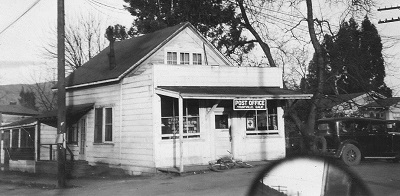Tidings, Yountville
“Yountville: The Beginnings” by John Holt
The Winter 2011-2012 Tidings covers the history of Yountville. This is an excerpt of an article written by one of our long-time Board Members, John Holt. To get your copy of Tidings, become a member today!
Sometime back in the early 1850s, George Yount had a small village site (six blocks and six streets, with a public square) laid out above his southern boundary and between the county road on the east and Charles Hopper’s plot line on the west. In 1855 James “Matt” Harbin had a two-block addition surveyed in the northeast corner of his property south of Madison and fronting the county road. Later that same year, Yount had a two-story building constructed just west of the corner of the county road stake that intersected his property. The ground floor was the first building in Yountville. The second was probably the Masonic Lodge, Caymus Lodge #92, that Yount founded. Sometime later in 1855, David Wise built the Sebastopol Exchange. In March 1857 Elizabeth Clayton built the White House Hostelry, which is the phone company building today. By the end of 1856 the town had a blacksmith shop, a hotel, a store and a cemetery; all that was needed was a church, post office and school to make it a “real” town.
Fortuitously, Donald M. Johnson was appointed the first Postmaster of Sebastopol. One interesting fact is that persons and businesses located outside Yount’s property preferred the name of Sebastopol; the USPS agreed despite another town so-named in Sonoma County. The second postmaster, Baylies W. Arnold, was appointed on September 30, 1858 and remained there until 1872. The Sebastopol Post Office was changed officially to Yountville Post Office on May 4, 1867. The mail was brought twice a week by schooner and wagon train from San Francisco until the railroad arrived in 1868. Later post offices were in numerous locations (including Gibbs and Cooper’s 1860s brick store, and the original brick railroad station) until settling in its present site at Washington and Mulberry Streets.
Yountville’s first school location is similarly uncertain but may have been situated on the five acre property that Yount and Hopper sold to Richard T. Montgomery, a school teacher from Napa enticed by Yountville to teach. Montgomery was a printer by trade and worked for the Napa County Reporter in 1858. It appears there was a one-room schoolhouse on property east of the county road (Yount Street) that was added to in 1881. This old schoolhouse was replaced in the 1920s by the present Town Hall building and then in 1951 at its current location next door. Early Yountville school pictures on record are confusing with similar buildings marked “Liberty School, Yountville-began in 1865” and, of course, the other Yount School (with the bell tower) located on Silverado Trail two miles east of town. There were actually two separate school districts, Yountville Elementary and Yount Elementary (serving the east valley side near Silverado Trail) until 1949 when they were combined into one Yountville Union Elementary School district in town.
Churches of Yountville got an early start when Charles Hopper sold a piece of property to the Methodist Episcopal Church in May 1859. Later that year, Yount sold a lot on what is now Yountville Park to the Christian (Disciples of Christ) Church, and they built their first brick church in California there. Only a church bell monument in Yountville Park remains today. Yountville’s oldest standing church, the Yountville Community Church, was built in 1876 as the Union Sunday School. The Yountville Cemetery was just outside of his village design of 1855. Although reserved for the town, it was not specifically recorded; it remained in Yount’s name and had to be bought at the 1870 auction by his son-in-law Eugene Sullivan for $1. It was held until 1892 when Yount’s grand-daughter Margarethe Davis conveyed title to the Yountville Cemetery Association.
Sebastopol/Yountville grew steadily but unspectacularly and somewhat slowly until the railroad arrived in 1868. They built the first brick station (now Pacific Blues Café) on the tracks a half mile south of Madison and the county road intersection. This forced the development of town south of Yount’s village. George Yount died on October 5, 1865 specifying in his will that no distribution of his unsold ranch could take place until five years after his death.
The arrival of the railroad and the October 5, 1870, sale of the remaining portions of Yount’s Rancho Caymus marked the beginning of the next big development of Yountville. San Francisco wine merchant Gottlieb Groezinger had earlier purchased much of Harbin’s, Boggs’, and Hopper’s properties to the west of the county road. At the auction he bought all of the remaining unsold lots in Yount’s village. Groezinger built one of the largest and best-equipped brick wineries right across from the railroad station, later called Vintage 1870 and V Marketplace. He also laid out an additional ten blocks for the rest of the town south of Madison. In aligning the streets, Washington Street had to be angled southeast to intersect the county road to allow for the railroad right of way. Numerous other buildings were built in the same area including the Gibbs building (Bouchon restaurant) across Washington Street in 1872 and the Magnolia Hotel (Maison Fleurie) in 1873. Groezinger planted 200 acres of grapevines to supply his winery and even built a magnificent two-story family mansion near the property (the single-story brick building north of the Groezinger wine cellar). The town quickly flourished with the influx of the railroad, merchants, and farmers.
Click on the images below to learn more.
[table id=36 /]

